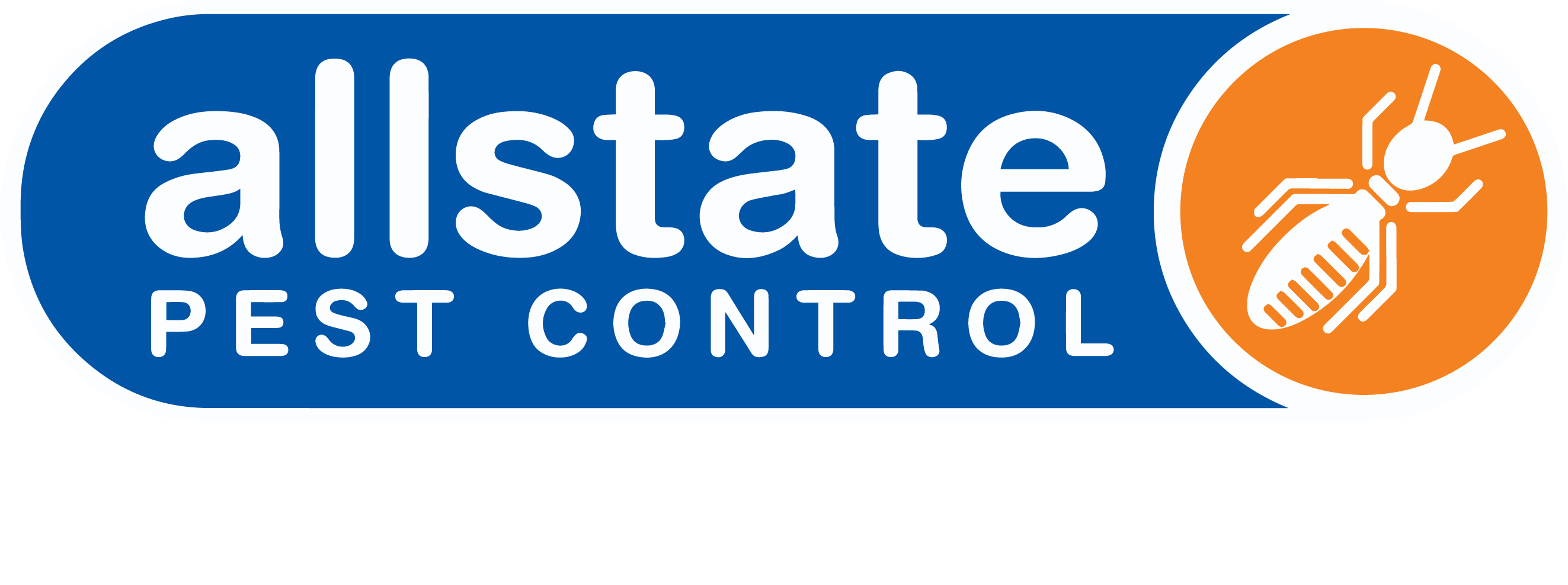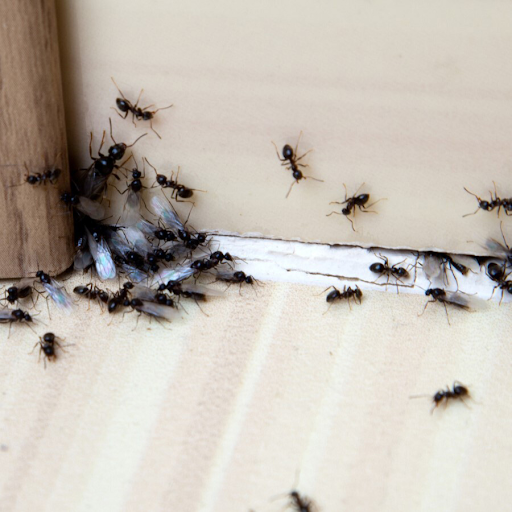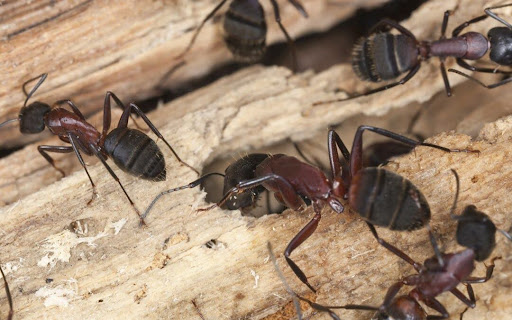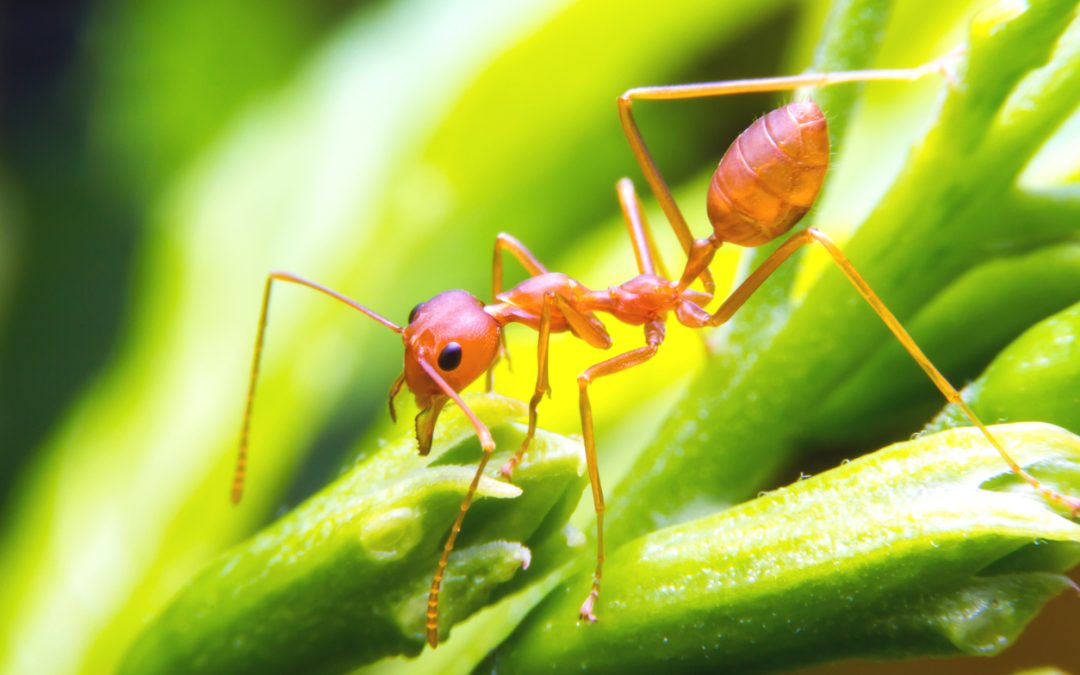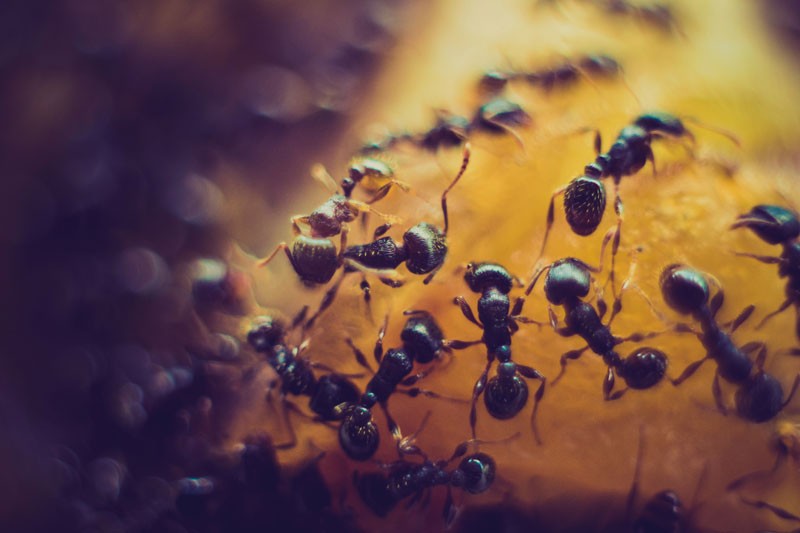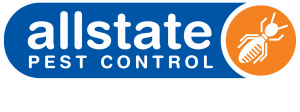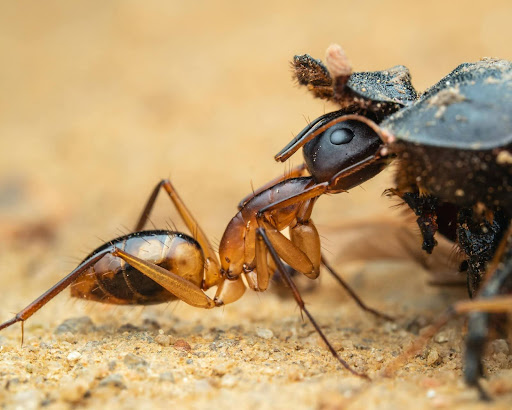
How Long Do Ants Live? (Lifespans Explained For Australian Species)
For some ants, it’s a few short weeks. For others, it’s decades! If you’ve ever wondered how long ants live for in Australia, we’re sharing some fascinating insights into the life cycle for the top 8 pest ant species in today’s Hivemind blog.
In this guide, we’ll answer the question how long ants live, exploring Australian species and how their lifespans affect pest control.
What questions will this article answer?
How long do ants live for: The typical ant life cycle?
The ant development cycle goes through 4 stages: the egg, larva and pupa, before maturing to an adult.
Black garden ants
Arguably the most common household ant, most black garden ants live between 1-2 years.
Bull ants
Large and aggressive by nature, bull ants can live for over 2 years.
Fire ants
Copper-brown in colour with potent stings, most fire ants will live for a few weeks to a few months.
Odorous house ants
Emitting a rotten coconut smell when crushed, odorous house ants have a life span of 2-3 years.
Argentine ants
Invasive and hard to manage, Argentine ants survive around 10-12 months.
Pharoah ants
Mostly found in warm, confined spaces, pharaoh ants are short lived, with a life span of only 2-3 weeks.
Ghost ants
With a milky white translucent appearance, ghost ants survive from a few months to a year.
Carpenter ants
Not to be mistaken for termites, carpenter ants usually live for 12 months.
How to prevent ants at home
We recommend removing sources of food and moisture, sealing entry points and regular yard maintenance.
Professional ant control
We use a combination of modern, targeted treatments including surface sprays, tamper proof baits and control dust.
For long-lasting and reliable ant management, choose Allstate
Available 24/7 to all suburbs for urgent advice, we offer effective solutions for ant outbreaks in commercial, residential and industrial settings.
How long do ants live for: the typical ant life cycle
Queen ants are responsible for laying eggs to increase the population. These eggs hatch as translucent white larva, which look like grubs. Eventually, the larva will grow and evolve into a more mature pupa, often (but not always) by spinning a cocoon to complete its development before finally emerging as an adult.
The ant life cycle can be influenced by the species, needs of the colony as well as environmental conditions such as temperature and humidity.
Understanding these stages helps explain how long ants live in different environments.
Black garden ants
Arguably the most common household ant, black garden ants will eat almost anything, from sweets, to meat and even rotten food. They usually grow 2.5-3mm long and have glossy black colouring.
Worker ants typically increase in size over many generations in more well-established colonies, and live between 1-2 years.
Queens can be up to 15mm long, live up to 15 years, and lay eggs which will normally hatch after 6 weeks.
Bull ants
As their name suggests, bull ants are big and aggressive, with venomous stings that pack a punch. They grow between 8-40mm in size, and are black in colour with splashes of bright red or orange on their heads or abdomen.
Once a queen has laid eggs, they may take up to several months to develop into adults, and workers can go on to live for over 2 years.
Stop ants in their tracks – get fast advice today.
 or
or
Fire ants
As their name suggests, fire ants are a copper-brown colour and have powerful stings. They are considered as highly invasive and become very defensive if provoked.
They can grow between 2-6mm in length, and you’ll find different sizes within the same colony. Queens live for up to 7 years, and can lay between 2,000 and 5,000 eggs per day.
Workers have a shorter lifespan – they’ll usually live for a few weeks to months at best.
Odorous house ants
Notorious for releasing a rotten coconut smell when crushed, odorous house ants are active throughout the year, and colonies often inhabit multiple nests, each with tens of thousands of workers. They’re usually brown or dark grey in colour, and between 2 and 3mm long.
So, how long do ants live when it comes to odorous house ants? Queens and workers can live for 2-3 years.
Odorous house ant adults normally take 5-11 weeks in total to develop from the egg stage, but this process can take up to 7 months depending on the season.
Argentine ants
An introduced and highly invasive species, a single colony of Argentine ants can infest vast spaces covering several hectares, making outbreaks challenging to treat and reinfestations quite common.
Light to dark brown in colour, and growing 1.5-3mm long, queens can live for several years, and workers between 10-12 months. Each colony may have multiple queens who can lay up to 60 eggs each day, with eggs taking 2-3 months to develop into adults.
Protect your family from ant bites, speak to an expert today
 or
or
Pharaoh ants
With the ability to relocate their nests and start a new one from the ground up if they feel threatened, Pharaoh ant infestations have a reputation for being hard to control, with baiting techniques usually preferred over surface sprays.
They’re often found nesting in warm areas such as wall voids containing electrical conduits, hot water plumbing and heating ducts.
They have distinct yellow to amber colouring and red/black stripes on their abdomens, and grow up to 2mm long.
Each colony will have multiple queens, each living between 4-12 months. Male pharaoh ants live for only 3-5 weeks after mating.
Depending on humidity and temperature, the egg to adult life cycle will take around 38-45 days. Adult workers have a short life span of around 9-10 weeks.
Ghost ants
As their name suggests, ghost ants can be hard to see with their small size and milky-white, translucent appearance. They grow between 1.3-2.5mm long, move rapidly, and like odorous house ants, can also emit a rotten coconut odour when crushed.
Queens can live for up to 15 years, and workers’ lifespan ranges from a few months to a year. Eggs take 2 to 4 weeks to hatch into larvae, with adults emerging after a further 2 months.
Carpenter ants
Not to be mistaken for termites, carpenter ants prefer tunnelling into moist, decaying wood such as old tree stumps and logs rather than timber in your home. However, do watch out for them if you have windowsills, eaves, roofs and doors that are exposed to moisture. They’ll leave behind small piles of sawdust.
Carpenter ants can be identified by their black, orange or brown bodies and grow between 2.5-14mm long.
It normally takes 3 to 6 years to establish a colony, and queens can live up to 25 years. Workers normally live for around 12 months. Adults will normally take between 6 and 12 weeks to fully develop from the egg stage, but low temperatures can slow this right down to around 10 months.
Don’t let an ant outbreak ruin your summer. We’ll help you plan ahead.
 or
or
How to prevent ants at home
Knowing how long ants live and how colonies grow over time makes prevention even more important.
Take the following simple steps to protect your home from marching ants:
- Seal off potential entry points including holes and cracks in walls, gaps under doors and around windows
- Avoid leaving food out, including pet food. Instead, keep it stored away in sturdy containers and packaging
- Keep your kitchen and dining areas tidy and clean by wiping away food spills and crumbs and disinfecting cooking and cleaning surfaces as well as floors
- Practice proper waste disposal and management by making sure that bins are not overflowing and all rubbish is stored in well-sealed plastic bags and bins with lids; secure piles of compost
- Fix leaking taps, drains and pipes to reduce moisture
- Reduce hiding spots and food sources in your yard by removing rotten fruit and vegetables, pet waste, and piles of leaves and vegetation
- Keep tree branches and bushes trimmed away from the building
Professional ant control
At Allstate, our pest technicians are trained to identify common pest ant species and understand how their behaviour can impact the type of treatments we use to stop an outbreak.
Because how long ants live can affect treatment strategies, we customise our approach based on their life cycle. We’ll start off by conducting a thorough inspection of all entry points and potential nesting sites, then apply the following treatments either directly to the nest itself or in active areas:
Surface spray
Airborne insecticide sprays can be applied around building perimeters and disperse over large spaces, offering a fast treatment for large areas. They’re also able to penetrate hard to reach, enclosed spaces, such as ant nest tunnels and tiny entry points such as cracks and holes.
Control dust
With its fine consistency, ant control dust can also be sprinkled directly into small access points. This includes gaps, into ant nest openings, as well as roof spaces and even your fuse box.
Ant baits
Tamper proof ant baits can be used to lure in ants, who carry the insecticide back to the rest of the colony. Although this method can take longer to control an outbreak, it can be tailored to target the specific pest ant species, eventually preventing the ant colony once and for all.
For long-lasting and reliable ant management, choose Allstate
Ant outbreaks can get out of control fast, so it’s best to avoid being on the back foot if you start seeing them marching into your home.
At Allstate, we’re available 24/7 to all suburbs of Adelaide for managing ant outbreaks in commercial, industrial and residential settings since 1986. Our highly trained team is fully equipped to successfully treat all ant infestations no matter the species or location of their nests.
With payment plan options and competitive warranties on all our services, you won’t need to worry about getting bitten by an army of ants invading your kitchen anytime soon.
